If you had to guess who saved the White Mountain forests from destruction, you probably wouldn’t come up with a politically ambitious investment banker. But it was John Wingate Weeks who authored one of the most important pieces of environmental legislation in the 20th century, the Weeks Act.
He had quite a challenge on his hands. Timber barons and powerful politicians opposed the government purchase of federal land to save it. But then devastating forest fires broke out on clear-cut land in both the West and the East. Suddenly people saw the sense in saving the environment.
John Wingate Weeks
On the face of it, John Wingate Weeks was an improbable savior of the White Mountain forests. He had made a fortune as the founder of Hornblower & Weeks, a Boston investment and brokerage firm. At 40 he had enough money to turn his attention to Republican politics, starting out as a Newton, Mass., alderman in 1899.
He was a two-term congressman angling for a seat on the powerful House Banking Committee. House Speaker Joe Cannon, however, appointed him to the House Agriculture Committee.
The clever Cannon knew Weeks had concerns about the devastation of the White Mountain forests. Weeks was born on April 11, 1860 in Lancaster, N.H., the gateway to the Great North Woods region. He had grown up watching timber barons clear-cut enormous swathes of trees. He also owned a summer estate on Mt. Prospect with sweeping views of the White Mountains.
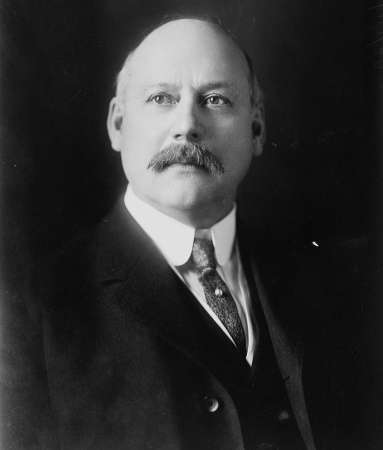
John Wingate Weeks
Weeks agreed to sponsor legislation to restore the forests.
White Mountain Forests
He wasn’t the only one upset about the destruction of the White Mountain forests. Deforestation created an ugly landscape. In 1889 the Forest Service warned the timber barons were destroying the business of 1,100 inns and hotels in the mountains.
The clear-cutting caused flooding, erosion and forest fires. Devastating fires then swept through the Zealand Valley in 1886 and 1897, laying waste to a lumber company town. Crawford Notch suffered terrible erosion.
Environmentalism Begins
In 1864, George Perkins Marsh laid the intellectual underpinnings for the preservation movement in his book, Man and Nature, or Physical geography as modified by human action.
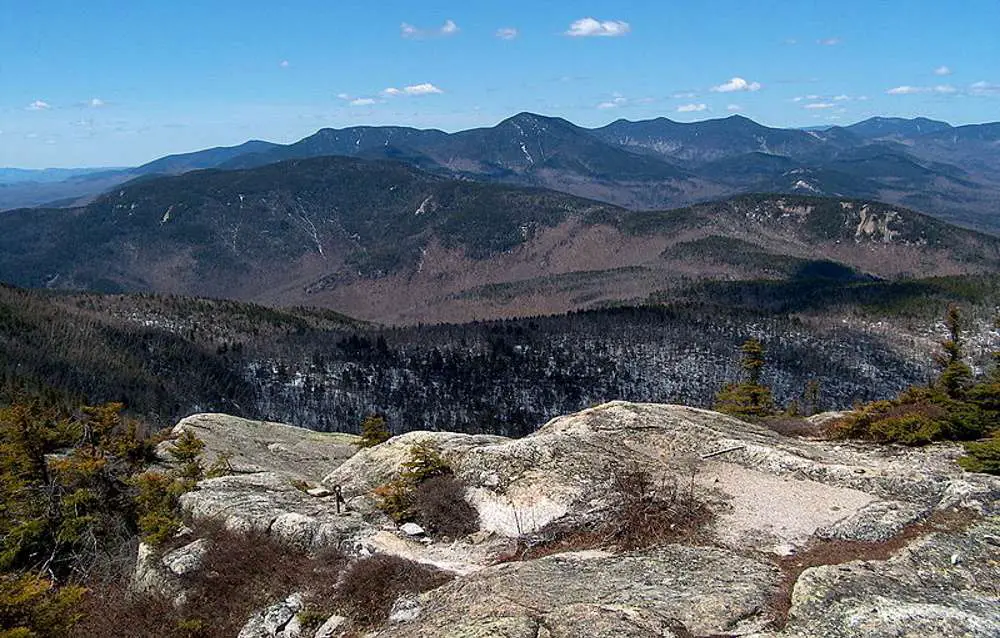
The Sandwich Range in the White Mountain National Forest.
Then in 1900, an Episcopal minister named John Johnson published a pamphlet called The Boa Constrictor of the White Mountains, Or the Worst ‘Trust’ in the World. Johnson had ministered to poor families in northern New Hampshire for years, and he knew the cause of their suffering: The New Hampshire Land Company, a monopoly formed by timber barons.
Johnson wrote the trust was starving out small-scale loggers by refusing to sell them wooded land. Eventually, the small loggers had to sell their own land to the trust at reduced prices. The trust, he wrote, was bent on reducing entire sections of the forest to a ‘blackened, hideous, howling wilderness.’
‘No scenery’
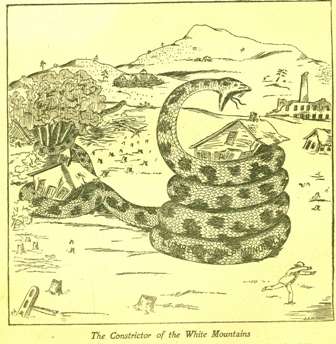 Johnson’s pamphlet stoked a public outcry. It also inspired the formation in 1901 of the Society for the Preservation of New Hampshire Forests. The group began petitioning the federal government to buy land in the White Mountains and create a national park.
Johnson’s pamphlet stoked a public outcry. It also inspired the formation in 1901 of the Society for the Preservation of New Hampshire Forests. The group began petitioning the federal government to buy land in the White Mountains and create a national park.
Many, including Joe Cannon, strongly opposed the idea of the federal government buying private land. Led by western politicians, Congress rejected more than 40 bills that would preserve the eastern forests. Cannon declared, “not one cent for scenery.”
Then came the devastating western fires of 1910, a result of deforestation. The fires burned 3 million acres and killed 85 people. The fires changed some minds, including Cannon’s.
How They Did It
When Cannon appointed John Wingate Weeks to the Agriculture Committee, he told him, “If you can frame a forestry bill which you, as a business man, are willing to support, I will do what I can to get an opportunity to get its consideration in the House.”
Weeks came up with a bill that businessmen could love. It justified federal purchases of land at the headwaters of navigable rivers for the purpose of promoting commerce.
The language of the 1911 Weeks Act allowed it to pass constitutional review under the commerce clause of the U.S. Constitution. In reality, the Weeks Act was the single most important legislation for the return of forests to the eastern United States. On March 1, 1911, President William Howard Taft signed the bill.
The Weeks Act saved major national forests, including Allegheny National Forest, White Mountain National Forest, Green Mountain National Forest, Pisgah National Forest, George Washington National Forest, and Ottawa National Forest.
John Wingate Weeks then went on to serve as a U.S. senator and Secretary of War. His most enduring legacy, though, was the Weeks Act.
He died on July 12, 1926. His children then donated his estate, atop Mount Prospect in Lancaster, to the State of New Hampshire, It is now a 420-acre park that offers stunning views of the White Mountain National Forest.
This story about the savior of the White Mountain forests was updated in 2024. Image of the Sandwich Range by By Ken Gallager at en.wikipedia – Own workTransferred from en.wikipedia, Public Domain, https://commons.wikimedia.org/w/index.php?curid=17977708.
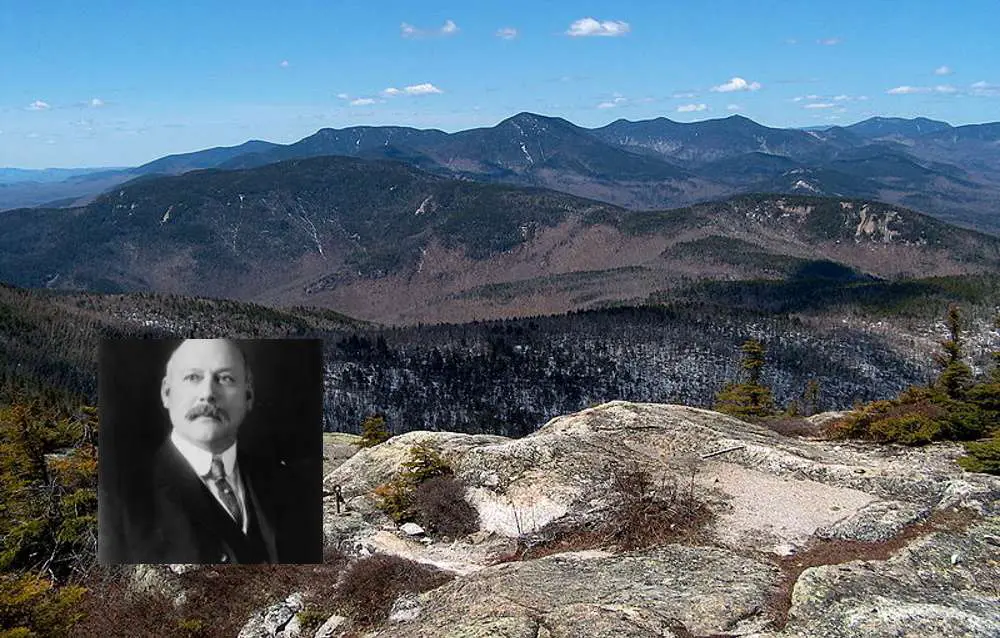
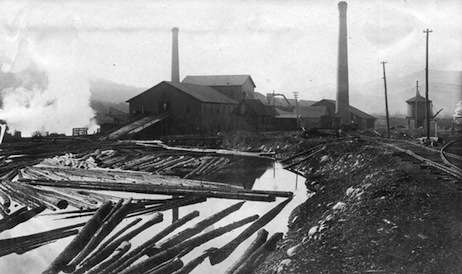
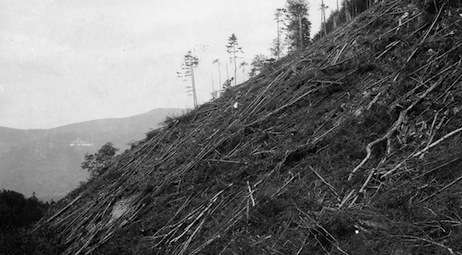

22 comments
I was wondering what politician my Junior HS was named after.
Years ago there was a ski area on Mt. Prospect. The Weeks Estate is beautiful.
Being originally from Groveton I have memories of skiing Mt. Prospect.
[…] Isaac Stephenson died on March 15, 1918, but the work of preserving the forests had already begun. […]
and he came from the town I lived in.
He was born on the farm next door to my family farm
Lovely.
Very interesting!!
[…] measure of his passion for Elinor that he followed her to the Ossipee Mountains, just south of the White Mountains, and stayed in a half-abandoned cottage with no lock on the […]
[…] was estimated at $2 million (about $55.6 million today). The Green Mountains of Vermont and the White Mountains of New Hampshire were covered with snow the next day. A foot and a half of snow fell in Middletown, […]
[…] February 1845, John Alfred Poor made an epic five-day dash through a blizzard in the White Mountains to snatch a railroad from under the noses of Boston’s powerful […]
[…] Alfred Vials – better known as English Jack or the Hermit of the White Mountains – was a fixture for decades in New Hampshire’s Crawford Notch. After a life of traveling the […]
[…] Saco, one of Maine’s largest rivers, starts in the White Mountains and empties into the ocean at Biddeford Pool. The Sokokis Indians lived near the mouth of the […]
[…] the spring of 1864 Nathaniel Hawthorne decided a trip to the White Mountains in New Hampshire would be good for his health. Pierce agreed to go with him. Hawthorne’s wife […]
[…] in Philadelphia with William Trost Richards. Richards, renowned for his realistic paintings of the White Mountains, took Fidelia under his […]
[…] Jan. 22, 1885, when the thermometer showed −47 °F in Randolph, N.H., a small town nestled in the White Mountains. An armed conflict threatened to break out in the Oklahoma Territory, where settlers invaded a […]
[…] moved to Crawford Notch in 1825, they unwittingly set in motion a chain of events that turned the White Mountains into a tourist […]
[…] Tuckerman, taught botany at Amherst College. He spent decades collecting lichens in the White Mountains, and Tuckerman Ravine is named for him. He and his wife also befriended the Dickinson family, and […]
[…] an unusually cold, snowy winter. With that warm front came the first storm, centered on the White Mountains. It lasted until March 13 and dumped five inches of rain onto Maine, New Hampshire and parts of […]
[…] they were willing to follow his leadership regardless. Emerson left for two weeks travel in the mountains of Northern New England in 1832 to search his soul and decide his future. When he returned, he could not reconcile his […]
[…] off course than the crew realized, and the course they set would take them toward New Hampshire’s White Mountains. Dropping in altitude in hopes of seeing the air field only made matters […]
[…] always get along, and she was a bit of a daredevil. In 1940 she had shattered her leg skiing in the White Mountains, in the women’s slalom race. That accident put her in the hospital for a week and triggered a […]
Comments are closed.